OK, so you’re a whistle player and you want to learn the flute. Armed with your favourite tune, it’s up to the lips and away…
If you are blessed with natural ability don’t bother reading any further.
If you are struggling to read this through the mist of tears, let’s see what we can do to help.
The first thing it’s useful to be aware of, is that the method of sound production is the same for both instruments. So why can’t you get a note out of the flute?
THE DIFFERENCES
The flute is an open-air whistle.
Put your lips to the correct end of a whistle, and all you have to do is blow. The instrument is designed to channel your breath in the right direction down the airway.
It emerges and crosses a narrow gap to be split by a sharp edge, positioned in such a way that most of the air is directed up and out of the whistle, but a small amount goes down and in = SOUND!
Yes, yes, you knew that already, and better explained.
THE SIMILARITIES
When blowing a flute, the distance between your lips and the embouchure hole corresponds to the windway on the whistle, and it has to be directed with as much care. Your breath has to have sides to it, although it is ‘open-air’. Pursing your lips with their corners upturned as when smiling, (a sense of humour is always helpful) might help. Now you have to direct this solid-sided column of air in the right direction. That is, to be split by the edge on the far side of the embouchure hole.
As with your whistle, most goes over it, but some breath enters the body of the flute, = SOUND. Now you can pick up your flute.
Not all of it, just the HEAD part.
Leave the body in the box, it contains SIX potential reasons for a disappointing start…the finger holes, of which more later.
FIRST BREATHS
With the palm of one hand blanking off the open end, raise the head to your lips letting your eye guide the embouchure hole to a central position, and gently blow.
With a cold instrument, your breath will likely leave a condensation mark beyond the hole, practice getting this central.
You should find this an easier way of obtaining a sound.
By altering your lip shape, and slightly varying the head position, try for a sound that contains plenty of NOTE, with a minimum of AIR noise. This is wasted breath…more later.
When you are able to produce a good solid tone at will, take your hand away and try it with the head open ended. You will doubtless have to fine-tune your new-found embouchure, until once again producing at will, that full, fat, rich, note.
Now you can assemble the flute and have a go.
At least now, if a good note escapes you, you can be fairly confident that it isn’t the blowing that is at fault. It is much more likely to be a fingering problem, i.e., a hole not covered properly.
Oh yes, wasted breath.
It’s obvious when you think about it, less wasted air means fewer breaths, means longer passages and better control. And you wont get quite so dizzy!
Look out Matt Malloy!

Address:
Unit 4, Creative Court
Clovelly Road Industrial Estate
Bideford
EX39 3HN
Opening hours:
Tuesday 10:00 – 13:00
Wednesday 10:00 – 13:00
Thursday 10:00 – 13:00

Tony Dixon Manufacturing is closing from 15 December 2023, for two weeks. We will be re-opening on 2 January 2024.
Any orders not received and fully paid for by 14 December 2023 will not be processed until the new year.
